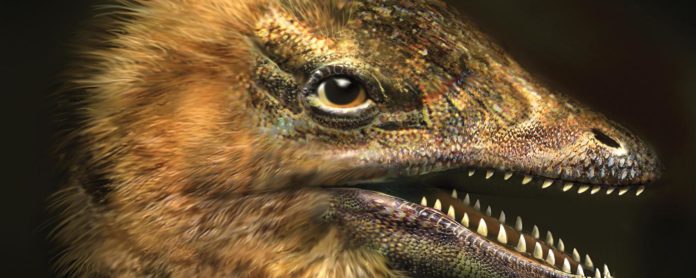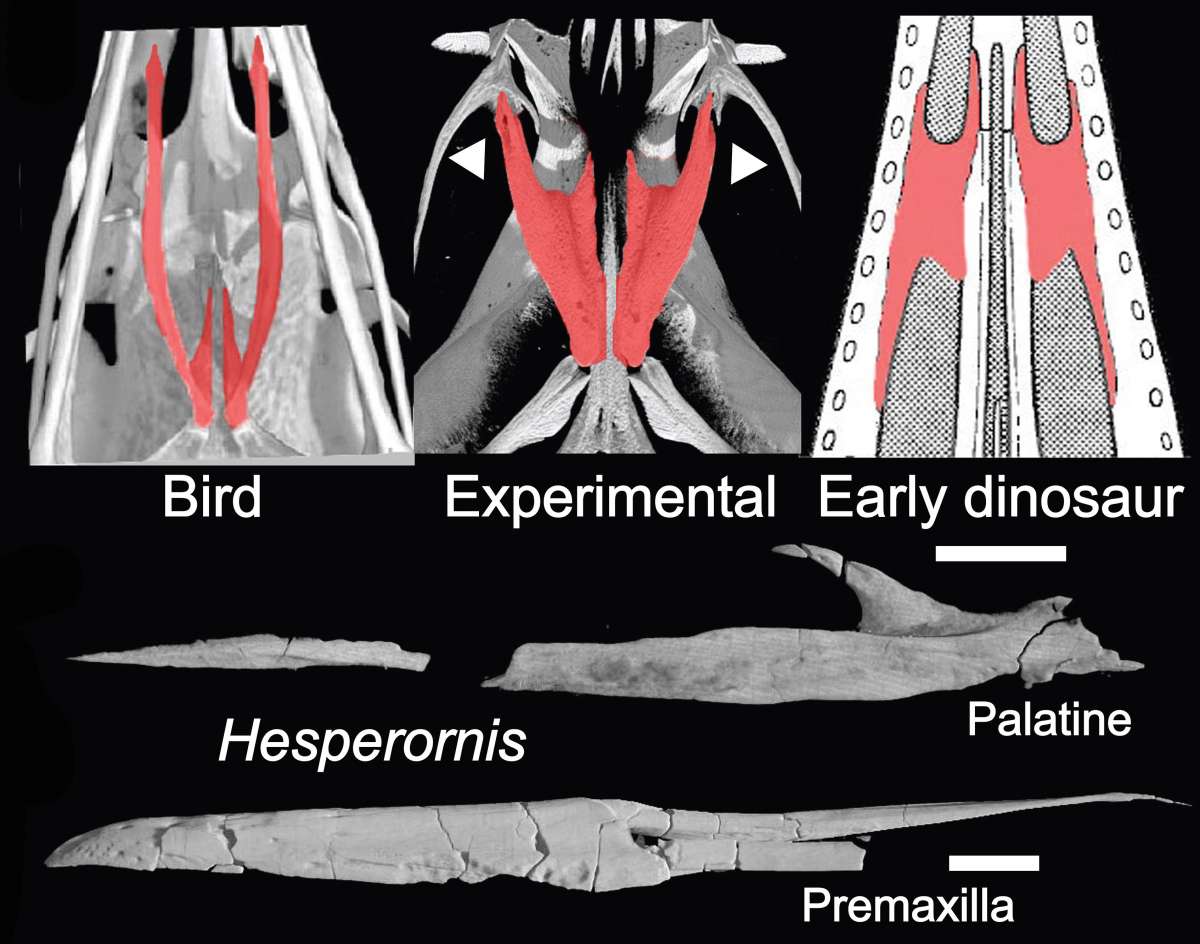
To determine how snouts might have turned into beaks as dinosaurs evolved into birds more than 65 million years ago, a research team led by Yale paleontologist and developmental biologist Bhart-Anjan S. Bhullar and Harvard developmental biologist Arhat Abzhanov recently created chicken embryos with Velociraptor-like faces by tampering with the molecules that build the birds’ beaks. The study, published in the journal Evolution, gives an insight into how dinosaur snouts, rounded and with a different bone structure turned into modern beaks.
Bhullar said in a statement:
“Our goal here was to understand the molecular underpinnings of an important evolutionary transition, not to create a ‘dino-chicken’ simply for the sake of it. The beak is a crucial part of the avian feeding apparatus, and is the component of the avian skeleton that has perhaps diversified most extensively and most radically — consider flamingos, parrots, hawks, pelicans, and hummingbirds, among others. Yet little work has been done on what exactly a beak is, anatomically, and how it got that way either evolutionarily or developmentally. I wanted to know what the beak was skeletally, functionally and when this major transformation occurred from a normal vertebrate snout to the very unique structures used in birds.”
The scientists replicated ancestral molecular development to transform chicken embryos in a laboratory into specimens with a snout and palate configuration similar to that of small dinosaurs such as Velociraptor and Archaeopteryx.
They looked at fossils of beaked dinosaurs and the bones of modern birds and found that there was a particular pattern of gene expression in birds that controlled the shape of the beak; and it was missing in mammals and reptiles such as mice, emus, alligators, lizards and turtles. They then used small-molecule inhibitors to stop the crucial proteins that develop the modern chicken beak. Once they stopped the proteins, the embryos formed “the palatine bone on the roof of the mouth to go back to its ancestral state”. Meaning, the scientists were able to make the chicken embryos grow a snout and palate that resembled their ancestors, the dinosaurs.
According to Bhullar, the research has several implications. “If a single molecular mechanism was responsible for this transformation, there should be a corresponding, linked transformation in the fossil record. This is borne out by the fact that Hesperornis — discovered by Othniel Charles Marsh of the Yale Peabody Museum of Natural History — which is a near relative of modern birds that still retains teeth and the most primitive stem avian with a modernized beak in the form of fused, elongate premaxillae, also possesses a modern bird palatine bone,” he said.
The strategy the research team followed to analyze the evolution of the beak could also help researchers study other major evolutionary transformations, such as the origin of mammals from their reptilian ancestors. In the future, researchers could also investigate all the genes involved in the evolution and development of the beak.
“There are between 10,000 and 20,000 species of birds alive today, at least twice as many as the total number of mammal species, and so in many ways it is still the Age of Dinosaurs,” Bhullar told Live Science stressing that the scientists are not yet capable of genetically modifying chickens to make them resemble their dinosaur ancestors.
This Article (Dino-Chicken: Scientists Create Chickens With Dinosaur Snouts) is free and open source. You have permission to republish this article under a Creative Commons license with attribution to the author and AnonHQ.com.







Brings new meaning to the term “As rare as hens teeth.”?
Are you like 70 years old?
Even I know the term and I’m 22 years old.